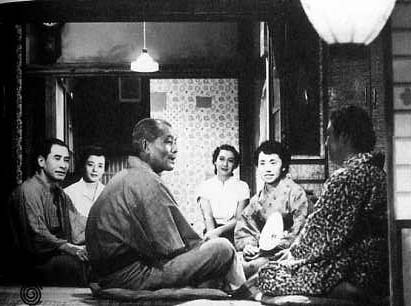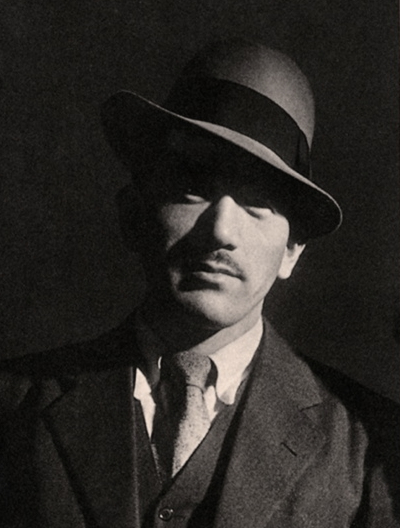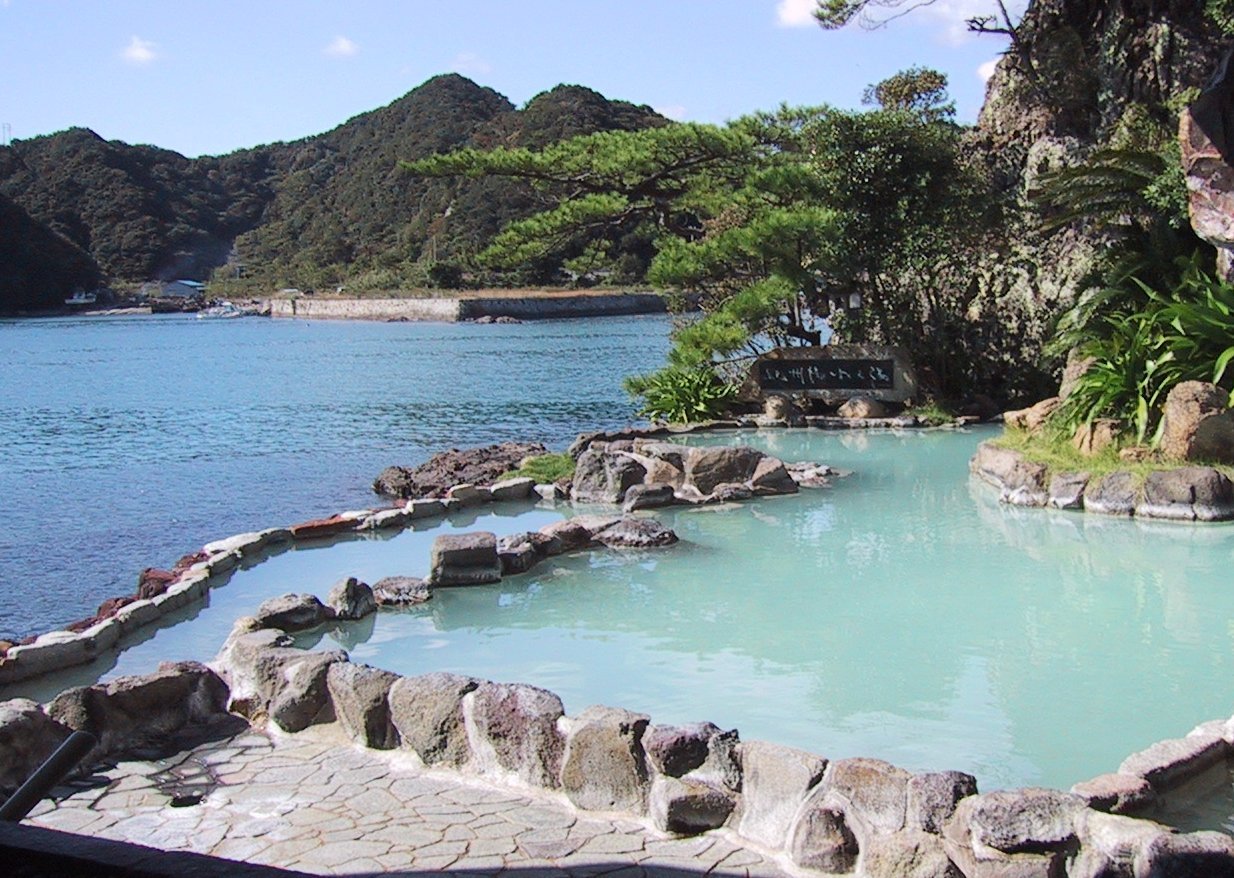|
Tokyo Story
is a 1953 Japanese drama film directed by Yasujirō Ozu and starring Chishū Ryū and Chieko Higashiyama about an aging couple who travel to Tokyo to visit their grown children. Upon release, it did not immediately gain international recognition and was considered "too Japanese" to be marketable by Japanese film exporters. It was screened in 1957 in London, where it won the inaugural Sutherland Trophy the following year, and received praise from U.S. film critics after a 1972 screening in New York City. ''Tokyo Story'' is widely regarded as Ozu's masterpiece and one of the greatest films in history of cinema. It was voted the greatest film of all time in the 2012 edition of a widely-respected poll of film directors by ''Sight & Sound'' magazine. Plot Retired couple Shūkichi and Tomi Hirayama live in Onomichi in western Japan with their daughter Kyōko, a primary school teacher. They have five adult children, four of whom are living. The couple travel to Tokyo to visit thei ... [...More Info...] [...Related Items...] OR: [Wikipedia] [Google] [Baidu] |
Yasujirō Ozu
was a Japanese film director and screenwriter. He began his career during the era of silent films, and his last films were made in colour in the early 1960s. Ozu first made a number of short comedies, before turning to more serious themes in the 1930s. The most prominent themes of Ozu's work are marriage and family, especially the relationships between generations. His most widely beloved films include '' Late Spring'' (1949), '' Tokyo Story'' (1953), and '' An Autumn Afternoon'' (1962). Widely regarded as one of the world's greatest and most influential filmmakers, Ozu's work has continued to receive acclaim since his death. In the 2012 ''Sight & Sound'' poll, Ozu's ''Tokyo Story'' was voted the third-greatest film of all time by critics world-wide. In the same poll, ''Tokyo Story'' was voted the greatest film of all time by 358 directors and film-makers world-wide. Biography Early life Ozu was born in the Fukagawa, Tokyo, the second son of merchant Toranosuke Ozu and his wi ... [...More Info...] [...Related Items...] OR: [Wikipedia] [Google] [Baidu] |
List Of Films Considered The Best
This is a list of films considered the best in national and international Opinion poll, surveys of Film criticism, critics and the public. Some surveys focus on all films, while others focus on a particular genre or country. Electoral system, Voting systems differ, and some surveys suffer from biases such as Self-selection bias, self-selection or skewed Demography, demographics, while others may be susceptible to forms of interference such as vote stacking. Critics and filmmakers ''Sight and Sound'' Every decade, starting in 1952, the British film magazine ''Sight and Sound'' asks an international group of film critics to vote for the greatest film of all time. Since 1992, they have invited directors to vote in a separate poll. Sixty-three critics participated in 1952, 70 critics in 1962, 89 critics in 1972, 122 critics in 1982, 132 critics and 101 directors in 1992, 145 critics and 108 directors in 2002, 846 critics and 358 directors in 2012, and 1639 critics and 480 d ... [...More Info...] [...Related Items...] OR: [Wikipedia] [Google] [Baidu] |
David Bordwell
David Jay Bordwell (; born July 23, 1947) is an American film theorist and film historian. Since receiving his PhD from the University of Iowa in 1974, he has written more than fifteen volumes on the subject of cinema including ''Narration in the Fiction Film'' (1985), ''Ozu and the Poetics of Cinema'' (1988), ''Making Meaning'' (1989), and ''On the History of Film Style'' (1997). With his wife Kristin Thompson, Bordwell wrote the textbooks ''Film Art'' (1979) and ''Film History'' (1994). ''Film Art'', currently being published in its 12th edition, is still used as a seminal text in introductory film courses. With aesthetic philosopher Noël Carroll, Bordwell edited the anthology ''Post-Theory: Reconstructing Film Studies'' (1996), a polemic on the state of contemporary film theory. His largest work to date remains ''The Classical Hollywood Cinema: Film Style and Mode of Production to 1960'' (1985), written in collaboration with Thompson and Janet Staiger. Several of his more ... [...More Info...] [...Related Items...] OR: [Wikipedia] [Google] [Baidu] |
Depression-era
The Great Depression (19291939) was an economic shock that impacted most countries across the world. It was a period of economic depression that became evident after a major fall in stock prices in the United States. The economic contagion began around September and led to the Wall Street stock market crash of October 24 (Black Thursday). It was the longest, deepest, and most widespread depression of the 20th century. Between 1929 and 1932, worldwide gross domestic product (GDP) fell by an estimated 15%. By comparison, worldwide GDP fell by less than 1% from 2008 to 2009 during the Great Recession. Some economies started to recover by the mid-1930s. However, in many countries, the negative effects of the Great Depression lasted until the beginning of World War II. Devastating effects were seen in both rich and poor countries with falling personal income, prices, tax revenues, and profits. International trade fell by more than 50%, unemployment in the U.S. rose to 23% and ... [...More Info...] [...Related Items...] OR: [Wikipedia] [Google] [Baidu] |
Leo McCarey
Thomas Leo McCarey (October 3, 1898 – July 5, 1969) was an American film director, screenwriter, and producer. He was involved in nearly 200 films, the most well known today being ''Duck Soup'', '' Make Way for Tomorrow'', '' The Awful Truth'', '' Going My Way'', '' The Bells of St. Mary's'', '' My Son John'' and '' An Affair To Remember''. While focusing mainly on screwball comedies during the 1930s, McCarey turned towards producing more socially conscious and overtly religious films during the 1940s, ultimately finding success and acclaim in both genres. McCarey was one of the most popular and established comedy directors of the pre-World War II era. Life and career Born in Los Angeles, California, McCarey attended St. Joseph's Catholic School and Los Angeles High School. His father was Thomas J. McCarey, whom the Los Angeles Times called "the greatest fight promoter in the world." Leo McCarey would later make a boxing comedy with Harold Lloyd called '' The Milky Way' ... [...More Info...] [...Related Items...] OR: [Wikipedia] [Google] [Baidu] |
Make Way For Tomorrow
''Make Way for Tomorrow'' is a 1937 American drama film directed by Leo McCarey. The plot concerns an elderly couple (played by Victor Moore and Beulah Bondi) who are forced to separate when they lose their house and none of their five children will take both parents. The film was written by Viña Delmar, from a play by Helen and Noah Leary, which was in turn based on the novel ''The Years Are So Long'' by advice columnist Josephine Lawrence. McCarey viewed the film as his best, and it has been praised by later critics. In 2010, it was released selected for preservation by the United States Library of Congress's National Film Registry. Plot Barkley "Bark" (Victor Moore) and Lucy Cooper ( Beulah Bondi) are an elderly couple who lose their home to foreclosure, as Barkley has been unable to find employment because of his age. They summon four of their five children—the fifth lives thousands of miles away in California—to break the news and decide where they will live until t ... [...More Info...] [...Related Items...] OR: [Wikipedia] [Google] [Baidu] |
Setsuko Hara And Yasujiro Ozu In Tokyo Story
Setsuko (written: or in hiragana) is a feminine Japanese given name. Notable people with the name include: *, later of Japan *, actress *, Japanese volleyball player *, Japanese actress and model *Setsuko Klossowska de Rola (born 1942), Japanese painter *Setsuko Kobori Japanese table tennis player *Setsuko Matsunaga Nishi (1921–2012), Japanese pioneering community activist and researcher *, Japanese yōga painter *, Japanese volleyball player *, Japanese swimmer *, Japanese novelist *, Japanese–Canadian nuclear disarmament campaigner *, Japanese novelist *, Japanese volleyball player Fictional characters *Setsuko, a character in the film ''Grave of the Fireflies is a 1988 Japanese animated war tragedy film based on a 1967 short story by Akiyuki Nosaka. It was written and directed by Isao Takahata, and animated by Studio Ghibli for Shinchosha Publishing. The film stars , , and . Set in the city ...'' References {{given name Japanese feminine given names ... [...More Info...] [...Related Items...] OR: [Wikipedia] [Google] [Baidu] |
Osaka
is a designated city in the Kansai region of Honshu in Japan. It is the capital of and most populous city in Osaka Prefecture, and the third most populous city in Japan, following Special wards of Tokyo and Yokohama. With a population of 2.7 million in the 2020 census, it is also the largest component of the Keihanshin Metropolitan Area, which is the second-largest metropolitan area in Japan and the 10th largest urban area in the world with more than 19 million inhabitants. Osaka was traditionally considered Japan's economic hub. By the Kofun period (300–538) it had developed into an important regional port, and in the 7th and 8th centuries, it served briefly as the imperial capital. Osaka continued to flourish during the Edo period (1603–1867) and became known as a center of Japanese culture. Following the Meiji Restoration, Osaka greatly expanded in size and underwent rapid industrialization. In 1889, Osaka was officially established as a municipality. The const ... [...More Info...] [...Related Items...] OR: [Wikipedia] [Google] [Baidu] |
Atami
is a city located in Shizuoka Prefecture, Japan. , the city had an estimated population of 36,865 in 21,593 households and a population density of 600 persons per km2. The total area of the city is . Geography Atami is located in the far eastern corner of Shizuoka Prefecture at the northern end of Izu Peninsula. The city is on the steep slopes of a partially submerged volcanic caldera on the edge of Sagami Bay. The name "Atami" literally means "hot ocean," a reference to the town's famous ''onsen'' hot springs. The city boundaries include the offshore island of Hatsushima. Most of Atami is located within the Fuji-Hakone-Izu National Park. Warmed by the Kuroshio Current offshore, the area is known for its moderate maritime climate with hot, humid summers, and short winters. Surrounding municipalities *Shizuoka Prefecture ** Kannami ** Izunokuni ** Itō *Kanagawa Prefecture **Yugawara Demographics Per Japanese census data, the population of Atami has been in slow decline ov ... [...More Info...] [...Related Items...] OR: [Wikipedia] [Google] [Baidu] |
Onsen
In Japan, are the country's hot springs and the bathing facilities and traditional inns around them. As a volcanically active country, Japan has many onsens scattered throughout all of its major islands. There are approximately 25,000 hot spring sources throughout Japan that provide hot mineral water to about 3,000 genuine onsen establishments. Onsens come in many types and shapes, including and . Baths may be either publicly run by a municipality or privately, often as part of a hotel, ''ryokan'', or . The presence of an onsen is often indicated on signs and maps by the symbol ♨ or the kanji (''yu'', meaning "hot water"). Sometimes the simpler hiragana character ゆ (''yu''), understandable to younger children, is used. Traditionally, onsens were located outdoors, although many inns have now built indoor bathing facilities as well. Nowadays, as most households have their own bath, the number of traditional public baths has decreased, but the number of sightseeing ho ... [...More Info...] [...Related Items...] OR: [Wikipedia] [Google] [Baidu] |
Pacific War
The Pacific War, sometimes called the Asia–Pacific War, was the Theater (warfare), theater of World War II that was fought in Asia, the Pacific Ocean, the Indian Ocean, and Oceania. It was geographically the largest theater of the war, including the vast Pacific Ocean theatre of World War II, Pacific Ocean theater, the South West Pacific theatre of World War II, South West Pacific theater, the Second Sino-Japanese War, and the Soviet–Japanese War. The Second Sino-Japanese War between the Empire of Japan and the Republic of China (1912–49), Republic of China had been in progress since 7 July 1937, with hostilities dating back as far as 19 September 1931 with the Japanese invasion of Manchuria. However, it is more widely accepted that the Pacific War itself began on 7 December (8 December Japanese time) 1941, when the Japanese simultaneously Japanese invasion of Thailand, invaded Thailand, attacked the British colonies of Malayan Campaign, Malaya, Battle of Singapore, ... [...More Info...] [...Related Items...] OR: [Wikipedia] [Google] [Baidu] |







